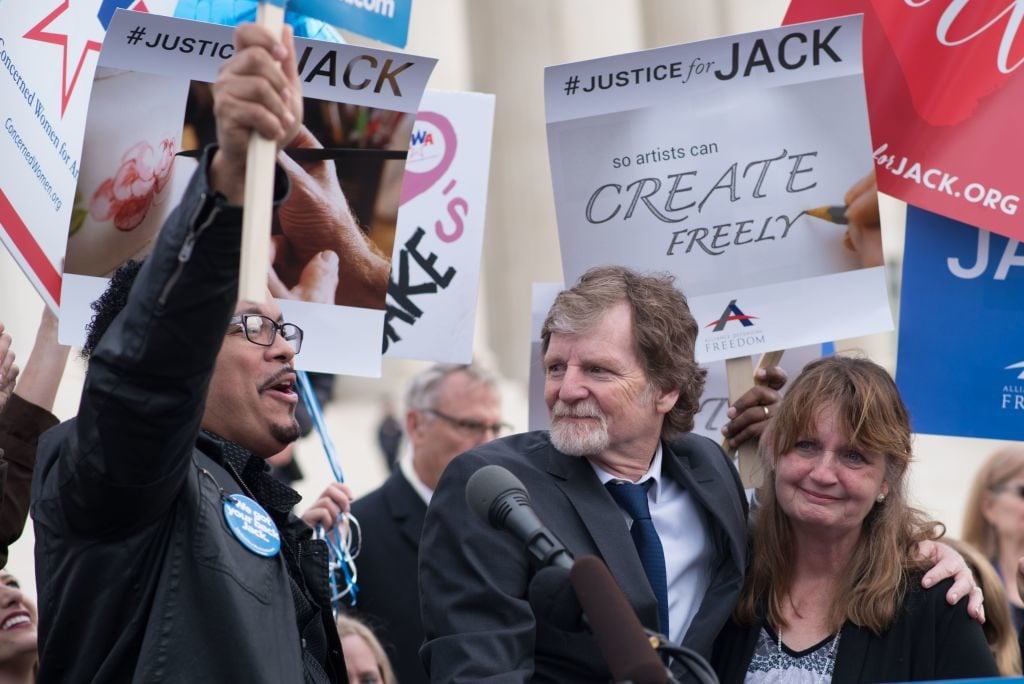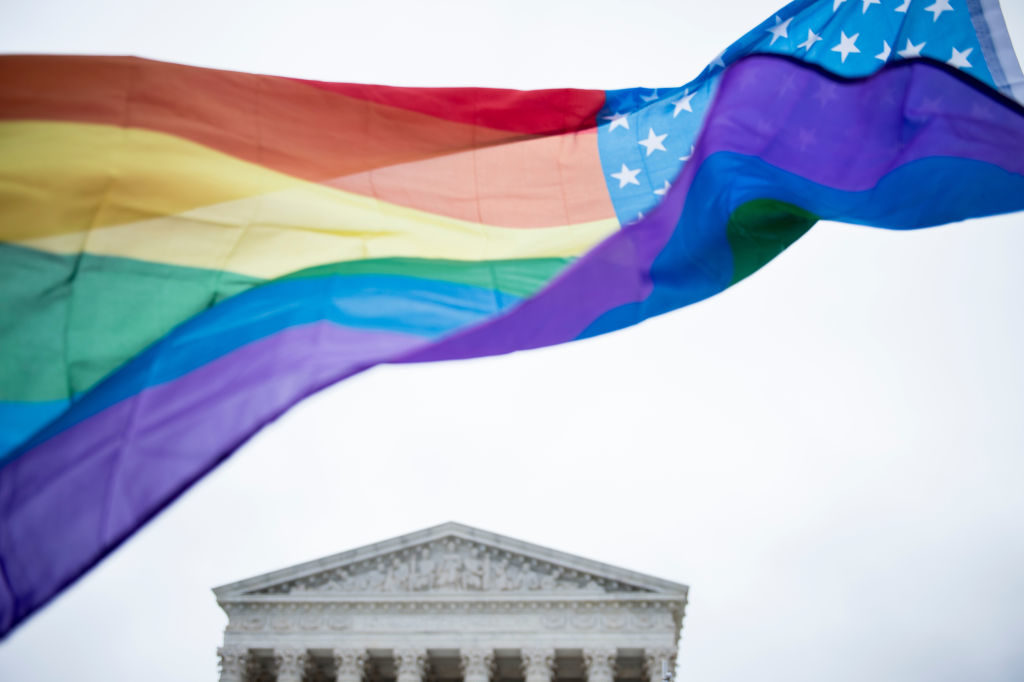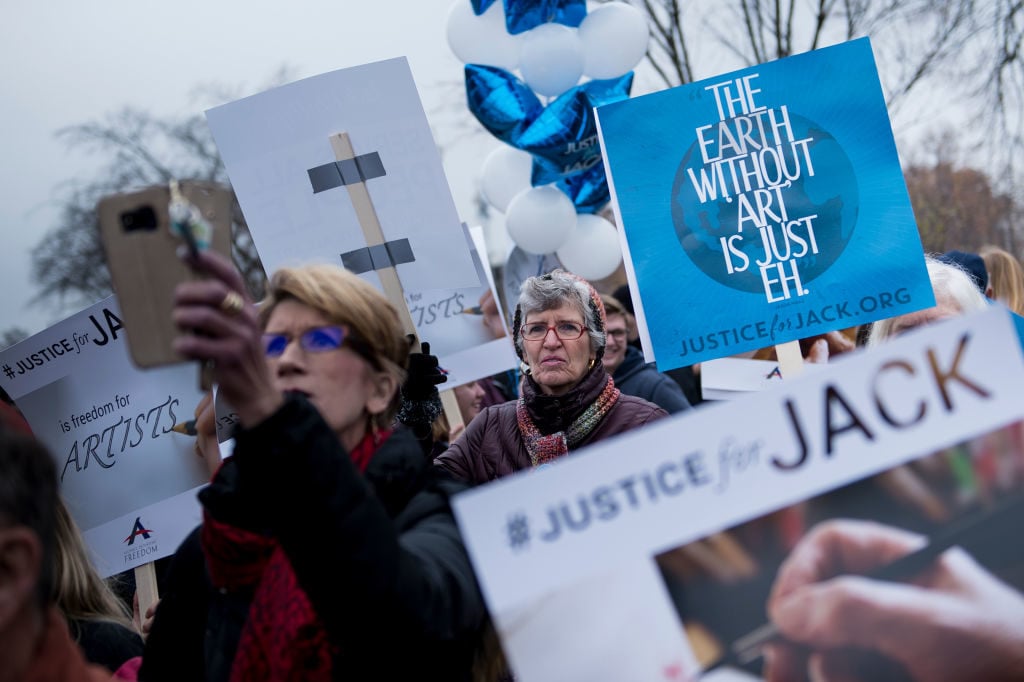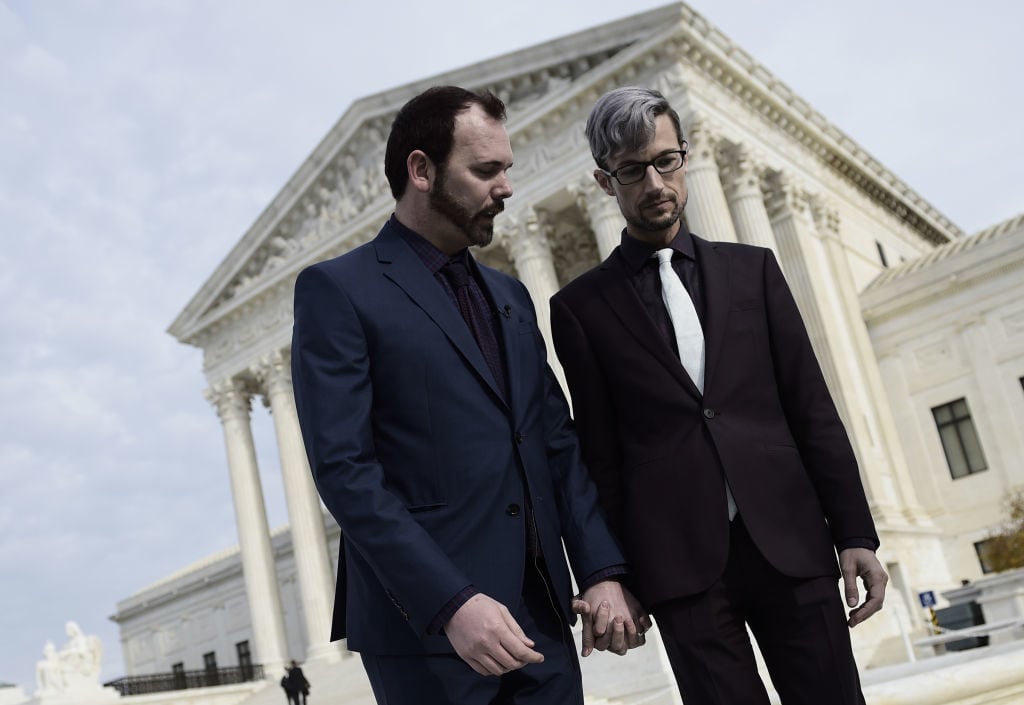Opinion
Why the Legal Strategy Behind Masterpiece Cakeshop Gets Art Backwards—and Why It Should Make People Nervous
What happens when the definition of “art” becomes a burning political issue of our day.

What happens when the definition of “art” becomes a burning political issue of our day.

Ben Davis

Commenting on Supreme Court decisions is probably above the pay grade of a lowly art critic. Still, there’s an important point to be made about Monday’s much-debated decision in Masterpiece Cakeshop vs. Colorado Civil Rights Commission. The key conflict in the case of the Christian baker who refused to make a cake to celebrate the wedding of Charlie Craig and Dave Mullins may be gay rights vs. religious freedom—but at its heart it also represents social conservatives pressing a new and unexpected union of art and politics.
What is important to grasp (and what some of the legal commentary leaves unsaid) is this: The issue was not whether businesses, in general, may deny service to same-sex couples because of religious conviction. The issue was whether artists, specifically, may deny service to same-sex couples because of religious conviction.
In effect, the baker and his lawyers have sought to draw upon the exceptional quality of artistic labor in order to carve out an exception to the anti-discrimination laws that American business owners must otherwise observe.
“I serve everybody,” Jack Phillips, the baker, emphasized on Good Morning America on Tuesday. “I just don’t create cakes for every occasion that people ask me to create.”
Asked if their legal campaign amounted to an attempt to legitimate anti-gay discrimination, Phillips’s lawyer Kristen Waggoner—of the Christian advocacy group Alliance Defending Freedom—was clear: “Absolutely not, the court made very clear, as we made clear in our argument before the court, that Jack loves and serves anyone who walks into his store. But he doesn’t express all messages.”
In essence, they are trying to carve up the cake of discrimination. They say that while Phillips may have to serve everyone equally in routine business, there are parts of his business that are not routine. Those are the parts that bring into play his creativity and expression, which therefore touch on his inner life—the unique artistic aspects of his work.
Thus, Waggoner went on to stress: “He’s an expert baker, so when you go into his cake shop, he sketches, he sculpts, he hand-paints these custom cakes that are one-of-a-kind cakes, and that is what the court dealt with yesterday.”
An amicus brief put together by the Center for Religious Expression puts the comparison of cake-baking to art in even more flowery terms. Signed by 479 “creative professionals”—including the president of the company that produced The Lion, the Witch, and the Wardrobe; the actor who played Jesus in film The Gospel of Matthew; and Sharon Halverson, a piano teacher—it stated:
Jack Phillips is a creative professional. Wedding cakes are his works of art. In lieu of watercolors or pastels, Phillips uses fondant icing or frosting. He does not wield brushes, but icing bags and various tips, in carrying out the designs. The cake itself acts as his canvas and conveys his message. And Phillips’ shop, Masterpiece Cakeshop, is the gallery where his art pieces are displayed.
Since he did not, in fact, ask Craig and Mullins what message they wanted on their cake, denying them service based on the fact that any cake would of necessity be a pro-gay statement, the whole thing becomes about symbolism in the abstract. Indeed, arguments around the Masterpiece Cakeshop case have invoked the oeuvres of Piet Mondrian and Jackson Pollock as evidence that purely abstract form can be “expressive” of deep personal and social ideas.

The US Supreme Court is seen while arguments for Masterpiece Cakeshop vs. Colorado Civil Rights Commission is heard on December 5, 2017 in Washington, DC.
Photo courtesy Brendan Smialowski/AFP/Getty Images.
This, clearly, leads to some serious problems of the slippery-slope type. Here’s the New Yorker’s Jeffrey Toobin describing arguments when Masterpiece was argued last December:
Justice Ruth Bader Ginsburg [asked] if a person who designs wedding invitations is also an artist, who could refuse to do business with gay customers. [Kristin] Waggoner hedged, and Kagan jumped in. What about the jeweler who designs the rings? “It would depend on the context,” the lawyer responded. But Kagan was just warming up. What about the hair stylist? An artist? “Absolutely not,” Waggoner said. “There’s no expression or protected speech in that kind of context.” Kagan asked, “The makeup artist?” Not an artist, Waggoner said.
“It’s called an artist,” Kagan shot back. “It’s the makeup artist.” The courtroom audience, which is usually sedate, roared with laughter. Kagan wasn’t done. What about the chef who cooked the wedding dinner? Not an artist, Waggoner said. “Whoa!” Kagan replied. “The baker is engaged in speech, but the chef is not engaged in speech?”
Justice Breyer would go on to spell out the implications of the line of questioning. “The reason we’re asking these questions,” he said to Waggoner, “is because obviously we want some kind of distinction that will not undermine every civil-rights law, from the year one… including everybody who has been discriminated against in very basic things of life, food, design of furniture, homes, and buildings.”
So it is that the question of how you draw a line around something called “art” becomes a burning political issue of our day.

People rally for Jack Phillips, owner of Masterpiece Cake in Colorado, outside the US Supreme Court before Masterpiece Cakeshop vs. Colorado Civil Rights Commission is heard on December 5, 2017 in Washington, DC. Photo courtesy Brendan Smialowski/AFP/Getty Images.
It is important to realize how we arrived at this juncture. The Alliance Defending Freedom was founded in the early ‘90s by a consortium of hard-right religious conservatives as a counterweight to the American Civil Liberties Union, with the intent of finding ways to press social conservative values through the law. The Alliance’s rhetoric has been extreme enough that at one time it was branded a hate group. Its longtime director, Alan Sears, penned a charming little tome in 2003 titled The Homosexual Agenda: Exposing the Principal Threat to Religious Freedom Today.
According to an article in the New York Times last year, the Masterpiece Cakeshop case is emblematic of the Alliance’s new, deliberately less openly homophobic public relations strategy—an attempt to sweeten their message, so to speak. As an ACLU lawyer explained, “[T]hey are no longer leading with the messages they used to, which are ‘gay people are pedophiles and we need to keep them away from our kids.’”
To this end, the ADF has been actively cultivating a network of Christian small business owners—in particular creatives like graphic designers, videographers, and florists—who are open to the argument that anti-discrimination laws force them to violate their values by forcing them to accept creative work from LGBT+ clients. The ADF has offered them media training and slick PR campaigns, and sued cities preemptively on their behalf as fast as it can get them to sign on.
The attempt to use artistic freedom to undermine the scope of gay rights in the wake of the legalization of gay marriage in the 2015 Obergefell v. Hodges case may be compared to another right-wing attempt to roll back the clock: the very successful, decades-long strategy to undermine abortion rights after Roe v. Wade. By finding enough legal loopholes and pressing relentlessly to expand them, intransigent social conservatives have rendered the “right to choose” effectively inoperable in many places by eliminating any meaningful choice—all without having to repeal Roe.
Given the ADF’s history, goals, and general methods, it may be that the definitional slipperiness around “creative labor” noted by Justices Breyer, Kagan, and Ginzburg is exactly the point, despite reassurances to the contrary in court and to the media. Once you establish an exception for discrimination that involves “expression,” you potentially open up a large class of exceptions indeed. In The Managed Heart, sociologist Arlie Russell Hochschild coined the now-popular term “emotional labor,” noting that a substantial and growing proportion of jobs in our economy include some “emotional” or “expressive” or “creative” components. (The classic example is a flight attendant, for whom some portion of work is dedicated to keeping things pleasant for passengers.)
ADF’s description of Phillips (and its other “creative professionals”) is heavy on rhetoric about how craft overlaps with deeply held internal beliefs. A small irony is that, to the extent that Masterpiece Cakeshop is indeed similar to “the gallery where [Phillips’s] art pieces are displayed,” it is the cakes that he says he actually is willing to sell to gay clients—cakes produced, presumably, according to his own designs, which later find a buyer—that are most analogous to artworks in a gallery. Generally, you go to an art gallery to get something that has been produced with an independent vision, not to commission something new. It is the value placed on this independent vision that gives us the myth of the “autonomy” of art.
On the other hand, the kind of custom cake-making that Phillips refuses to do for a same-sex wedding resembles perfectly ordinary design work. As a category of labor, design is far, far more common than art (despite a consistent effort by “creative economy” pundits to blur the two together). Commissioned labor, whether or not it involves goods that are “hand-painted” or “one-of-a-kind,” generally involves using one’s skills within parameters set by a client.

Charlie Craig (left) and his spouse, Dave Mullins, hold hands outside the US Supreme Court as Masterpiece Cakeshop vs. Colorado Civil Rights Commission is heard on December 5, 2017 in Washington, DC. Photo courtesy Brendan Smialowski/AFP/Getty Images.
I cannot pretend to be clever enough to resolve the legal issues here. I mean, hell—even the Supreme Court wasn’t able to. Many observers have interpreted the decision as dodging the central conflict, instead reversing the Colorado Court of Appeals decision on the technical grounds that it had not been impartial. “The outcome of cases like this in other circumstances must await further elaboration in the courts,” Justice Kennedy wrote in the decision.
What I can say is that long-term, these matters are won in the court of public opinion as well as in the court of law, with the frame of debate changing as the scope of what is thinkable shifts. So one should note, since the battle goes on, how the terms of the struggle are shifting.
It is true, of course, that a large and growing share of the rising generation identifies as LGBT+—one in five—and a much, much larger percentage is sympathetic to gay rights or identifies as an ally. If you were betting on businesses to succeed over the long run, you would still not bet on the ones that proudly flew the flag of anti-gay marriage animus.
But pressing the association between religious liberty and artistic liberty is simultaneously a legal strategy to advance a cause, a political strategy to galvanize the conservative movement, and a PR strategy to turn the tide of public support. Rhetorically, it goads its opponents to choose between sounding as if they support creative autonomy—an incredibly cherished, if highly mythologized, value in our hyper-alienated society—and equal rights.
At one time, the maxim that “everyone is an artist” was considered a lefty call-to-arms. Associated with German artist Joseph Beuys, it meant that everyone should think of themselves as creatively empowered, no matter what they did; to cast off alienation and infuse their work and world with personal meaning. It is amusing, perhaps, to see social conservatives—normally perhaps the last you’d associate with a broad and plural notion of what art should be—now echo that rhetoric as a means to an end. But it is also alarming.
It represents a new phase in our renewed culture wars. And it is one that people need to take the measure of, because unfortunately, all signs indicate that this particular cake is just an appetizer of what is to come.